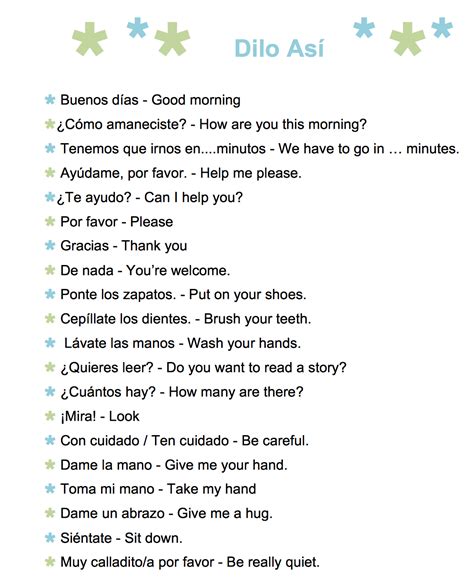The Beanie Baby phenomenon that swept the world in the 1990s is still a beloved memory for many collectors and enthusiasts. These small, stuffed animals filled with “beans” (small, round pellets) rather than traditional stuffing, were created by Ty Warner and became a global sensation. If you’re one of the many people who still cherish their Beanie Baby collection, you’ll want to know the secrets to preserving and potentially even increasing the value of these adorable toys.
First and foremost, it’s essential to understand that the condition of your Beanie Babies plays a significant role in their value. This means that any damage, such as torn tags, faded colors, or missing beans, can drastically reduce their worth. Therefore, the first secret to saving your collection is to handle your Beanie Babies with care. Always store them in a cool, dry place, away from direct sunlight, which can cause the colors to fade. It’s also crucial to keep them away from pets and children, who might accidentally damage them.
Another critical aspect of maintaining your Beanie Baby collection is ensuring that the tags are intact and in good condition. The tags, also known as “poem tags,” contain the Beanie Baby’s name, birthday, and a short poem. These tags are a significant part of the toy’s authenticity and value, so it’s vital to keep them attached and undamaged. If you notice that a tag is starting to come loose, you can carefully use a small amount of clear glue to reattach it. However, be cautious not to apply too much glue, as this can cause the tag to become stiff or even damage the Beanie Baby itself.
In addition to the physical condition of your Beanie Babies, it’s also important to keep the original packaging, if you still have it. The boxes or bags that the Beanie Babies came in can add significant value to your collection, especially if they are in mint condition. So, if you’re planning to store your Beanie Babies, consider keeping the packaging as well. You can use acid-free tissue paper or bubble wrap to protect the packaging and prevent it from getting damaged.
For those who are looking to sell their Beanie Baby collection, it’s essential to research and understand the market demand. Certain Beanie Babies, such as Peanut the Royal Blue Elephant, Princess the Bear, and Spot the Dog, are highly sought after and can sell for thousands of dollars. On the other hand, more common Beanie Babies might only sell for a few dollars. Therefore, it’s crucial to identify the rare and valuable Beanie Babies in your collection and price them accordingly.
To increase the authenticity and value of your Beanie Baby collection, consider getting your toys appraised by a professional. There are several companies that specialize in appraising and authenticating Beanie Babies, such as Ty Inc. or professional collectible appraisal services. These appraisals can provide you with a certificate of authenticity, which can be useful when selling your collection.
Furthermore, it’s essential to stay up-to-date with the latest Beanie Baby trends and market fluctuations. You can join online forums, social media groups, or attend collector’s conventions to network with other collectors and stay informed about the market. This will help you make informed decisions when buying, selling, or trading your Beanie Babies.
In addition to these tips, here are some more secrets to save your Beanie Baby collection:
- Store your Beanie Babies in a climate-controlled environment: Extreme temperatures and humidity can damage the fabric, cause the colors to fade, or even lead to mold growth.
- Avoid exposing your Beanie Babies to direct sunlight: As mentioned earlier, direct sunlight can cause the colors to fade, so it’s essential to store them in a shaded area or use UV-filtering window treatments.
- Use archival-quality materials for storage: When storing your Beanie Babies, use acid-free tissue paper, bubble wrap, or archival-quality boxes to prevent damage and preserve the toys.
- Keep your Beanie Babies away from pests: Moths, silverfish, and other pests can damage the fabric or eat through the beans, so it’s essential to store your Beanie Babies in a pest-free environment.
- Handle your Beanie Babies with clean hands: Oils from your skin can transfer to the fabric, causing damage or discoloration, so make sure to wash your hands before handling your Beanie Babies.
- Consider displaying your Beanie Babies: If you have a few rare or valuable Beanie Babies, consider displaying them in a glass case or on a shelf. This will not only showcase your collection but also protect the toys from damage.
- Keep your Beanie Baby collection organized: Use a cataloging system or spreadsheet to keep track of your collection, including the name, birthday, poem, and condition of each Beanie Baby.
- Be cautious when cleaning your Beanie Babies: If you need to clean a Beanie Baby, use a soft-bristled brush or a lint roller to gently remove dirt or debris. Avoid using water or cleaning products, as these can damage the fabric or cause the colors to run.
By following these secrets and tips, you can help preserve the value and condition of your Beanie Baby collection. Whether you’re a seasoned collector or just starting to build your collection, it’s essential to handle your Beanie Babies with care, stay informed about market trends, and take steps to protect and preserve these beloved toys.
What is the rarest Beanie Baby?
+The rarest Beanie Baby is often debated among collectors, but some of the most valuable and sought-after Beanie Babies include Peanut the Royal Blue Elephant, Princess the Bear, and Spot the Dog. These toys can sell for thousands of dollars due to their rarity and demand.
How do I determine the value of my Beanie Baby collection?
+To determine the value of your Beanie Baby collection, research the market demand and prices for similar toys. You can use online marketplaces, collector's forums, and appraisals from professional services to get an estimate of your collection's value. Consider factors such as the condition, rarity, and demand for each Beanie Baby when pricing your collection.
Can I still find rare Beanie Babies in stores?
+While it's possible to find rare Beanie Babies in stores, it's highly unlikely. Most rare Beanie Babies were produced in limited quantities and are now highly sought after by collectors. Your best bet is to search online marketplaces, collector's forums, or attend collector's conventions to find rare Beanie Babies.
How do I store my Beanie Baby collection to preserve its value?
+To store your Beanie Baby collection and preserve its value, keep the toys in a cool, dry place away from direct sunlight. Use archival-quality materials, such as acid-free tissue paper or bubble wrap, to prevent damage and protect the toys. Consider storing your Beanie Babies in a climate-controlled environment, such as a temperature- and humidity-controlled room, to prevent damage from extreme temperatures or humidity.
Can I repair damaged Beanie Babies to restore their value?
+While it's possible to repair damaged Beanie Babies, it's essential to exercise caution and consider the potential impact on the toy's value. If the damage is minor, such as a loose thread or a small tear, you can carefully repair the Beanie Baby using archival-quality materials. However, if the damage is extensive or affects the toy's authenticity, it's best to leave it as is or consult a professional conservator for advice.
How can I authenticate my Beanie Baby collection?
+To authenticate your Beanie Baby collection, research the official Ty Inc. website or consult with professional appraisers who specialize in Beanie Babies. Look for signs of authenticity, such as the presence of a poem tag, a birthday, and a name that matches the official Ty Inc. records. Be wary of counterfeit Beanie Babies, which can be difficult to distinguish from genuine ones.
In conclusion, preserving the value and condition of your Beanie Baby collection requires careful handling, storage, and maintenance. By following the secrets and tips outlined in this article, you can help ensure that your Beanie Babies remain in excellent condition and retain their value over time. Whether you’re a seasoned collector or just starting to build your collection, it’s essential to stay informed about market trends, take steps to protect and preserve your Beanie Babies, and enjoy the joy of collecting these beloved toys.



